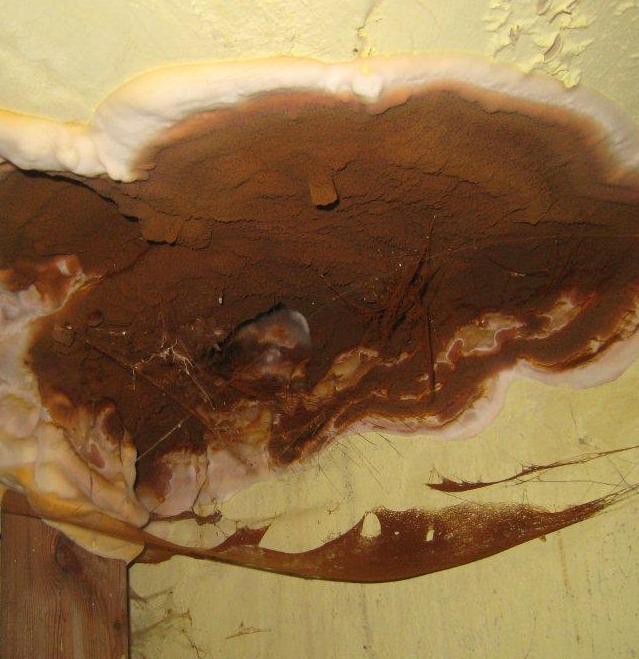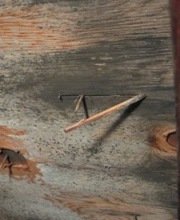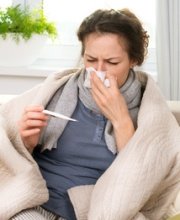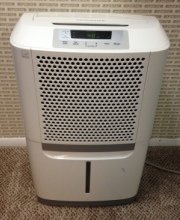Find a Mold Specialist Now
Click or Call, Toll-Free 24/7
Serpula lacrymans
Serpula lacrymans is a rusty red-colored mold and, when a large amount of this mold is present, the airborne mold spores will cause the appearance of red dust over large surface areas. It can be found on all sorts of household materials but is particularly likely to be found on wooden surfaces, including walls, floorboards, and furniture.
How Serpula Lacrymans Damages a Home
All types of mold can damage a home. This strain is particularly hard on houses, though.
 Serpula Lacrymans
Serpula LacrymansThis mold is sometimes referred to informally as the dry rot fungus or as building cancer. That's because it may be the most destructive of all types of mold that destroy wood. It causes wood to decompose or rot.
While it's most destructive to wood, it can also cause significant damage to masonry. You can read more about how mold can damage a home.
Unfortunately, this mold is often not discovered until a fair amount of damage has been done. If you discover any type of mold in your home, you need to take steps to have it removed as soon as possible. Red-colored mold is much less common than dark-colored mold, such as black, gray or brown mold, and if you discover red mold, the need to have it removed quickly is even greater. The damage to your home may already be significant but the mold needs to be removed before even greater damage is done.
Health Problems Associated with Serpula Lacrymans
Like all strains of mold, this one can cause health problems. Young children, elderly people, and those with health problems affecting the respiratory system or the immune system are at greatest risk for mold-related illness, but anyone could be affected. Even pets can become sick from exposure to mold! You can read more about mold-related illness in pets here.
This particular strain of mold has been connected to the development of asthma and may also trigger asthma attacks in people previously diagnosed with the condition. Mold triggers asthma attacks by irritating the lining of the bronchioles, the airways leading to the lungs. You can read more about the connection between mold and asthma.
Some cases of hypersensitivity pneumonitis have been reported in association with this strain of mold. According to the American Lung Association, hypersensitivity pneumonitis is a condition in which inflammation occurs in the lungs as a result of inhaling mold or other harmful substances, like dust or certain chemicals. It is caused by an allergic reaction to the inhaled substance and, if you continue to be exposed to the allergen, scarring in the lungs can result. This scarring of the lungs, called pulmonary fibrosis, makes breathing difficult and can be quite serious.
Of course, like other strains of mold, this one can also cause sinusitis, bronchitis, pneumonia, and other respiratory problems. You can read more about the effect of mold on the lungs.
If you're experiencing health problems you think might be related to mold exposure, especially difficulty breathing, you need to see a doctor as soon as possible. Be sure to inform your doctor about any exposure to mold. If you know the strain or strains of mold to which you've been exposed, inform your doctor of that, too. In addition to recommending the appropriate medical treatment, your doctor will likely advise you to have the mold removed from your home as soon as you can to prevent further exposure.
Removing Serpula Lacrymans from Your Home
To prevent serious damage to your home and to protect your health and the health of your family members, it's important to have the mold removed from your home as quickly as possible. The U.S. Environmental Protection Agency recommends calling a mold removal professional if the mold in your home covers an area larger than three feet by three feet, which is likely the case when you're dealing with this strain of mold. It's also advisable to have a professional handle the mold removal if you're experiencing mold-related health problems, since the process of removing mold increases your exposure to mold spores that can make your illness worse.
You can schedule a free consultation in your home with a mold removal professional to discuss the work that needs to be done to make your home safe and healthy again. Even if you plan to do the work yourself, you can benefit from some free advice from an expert in the field, including important safety information. You can find qualified mold removal professionals in your area by following the link.
Return From Serpula Lacrymans To Our Main Mold Types Page
Privacy Policy Terms and Conditions Accessibility Do Not Sell My Information Disclaimer Contact Us




